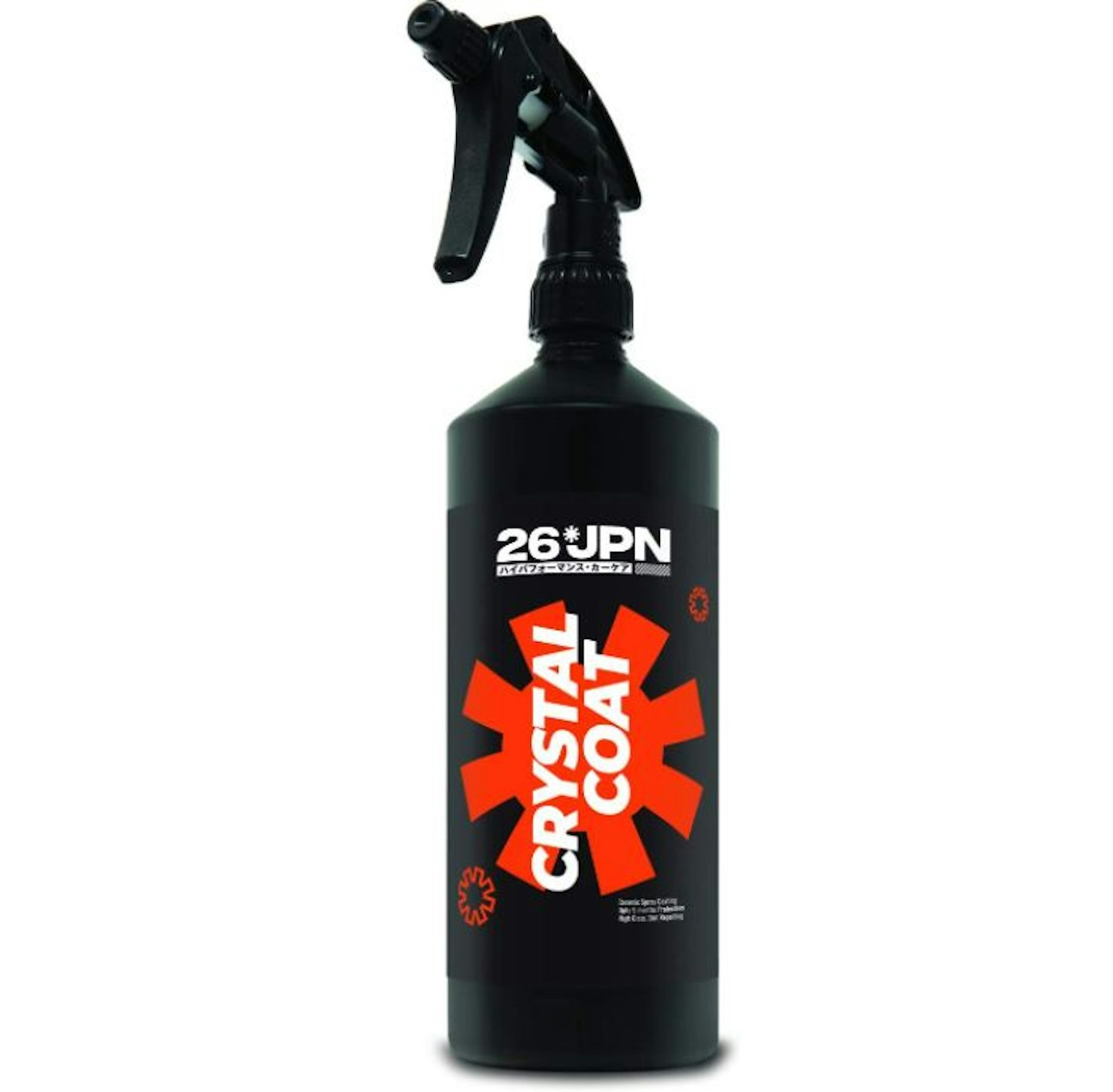Healthy paintwork really makes a car, in the same way, spice really makes a curry. A madras is incomplete without a dollop of fire; likewise, your efforts at caring for your car's paintwork must include paint protection of some kind.
That's what we are looking at here: options for car paint protection. It's hard to know what is best for you, not least because everyone has a different opinion on the subject. Therefore, we've put together an informative guide that aims to be as impartial as possible to give you a clear idea of which paint protection product suits you best.
Jump to
Should you bother?
If the appearance of your car matters to you, then yes, you should. Paintwork takes a hammering from a culmination of harsh UV rays, acidic substances, and muck and grit. In addition to helping protect against this ceaseless offensive, paint protection will make it harder for grime, muck, tar, bird droppings, and other substances to adhere quite so firmly to paintwork. Consequently, your car becomes easier to clean.
Be wary that a lot of paint protection products claim to generate a shine on your car. Most of these products have to be applied to a car that is already clean, so that is a little misleading. If you want to get a glossy finish from your paintwork, you must thoroughly clean and polish your car before adding a layer of paint protection.
Paint protection is an important step in car cleaning. It's the final piece of the puzzle that seals in all your hard work with a car shampoo and polish. Without it, all that will be undone in a jiffy once the car is used. To employ another food analogy, it's like doing a pot roast without searing the meat first in order to lock in the flavour.
You might imagine it's the hobby and weekend cars that should have paint protection most urgently. But these are only used on occasion, and it is, in fact, the everyday cars and high-milers that demonstrate the benefits of paint protection more obviously.
Your options for paint protection
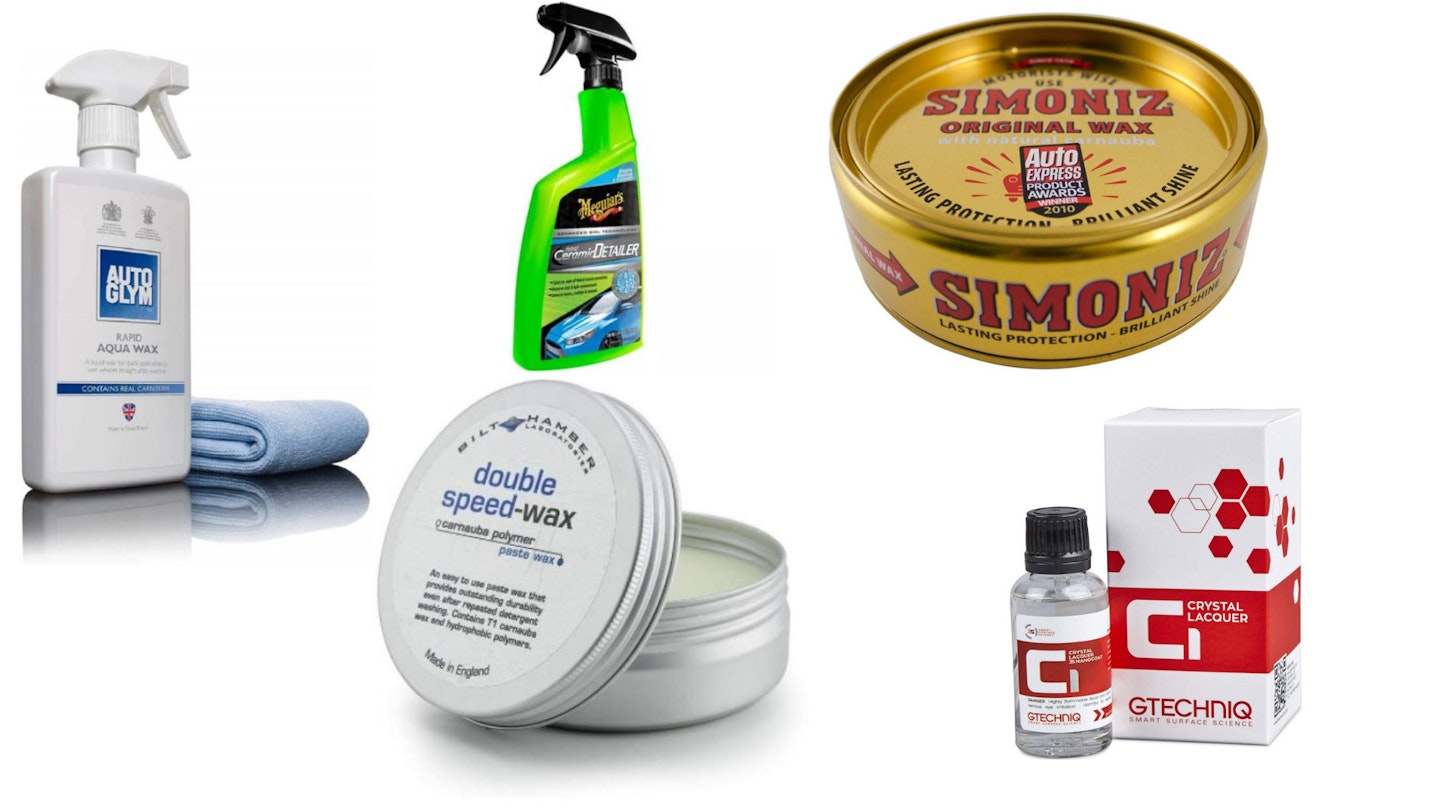
For DIY options you can easily use at home, you are looking at car wax (both natural and synthetic), ceramics, and graphene alternatives. Before we go into each thoroughly, below is a brief summary of each.
Car waxes are the traditional steak and kidney option, particularly natural carnauba wax. It is a tried and tested method that these days comes in both liquid and paste forms. Pastes take longer to apply but create a heavier layer of protection. Liquid forms are kind of the reverse: faster to apply but less durable as a protectant. Waxes provide good all-round protection, are hydrophobic, and work well in tandem with a polish to generate that lustrous glossy finish.
Ceramic coatings and products are more recent arrivals in paint protection. Such products use liquid silicon dioxide (SiO2) polymers (long chains of molecules), also known as silica and found in nature as quartz. Following application to a car's surface, the liquid forms a very strong bond to the applied surface. Ceramics' strong suits are longevity and UV protection. It's also highly hydrophobic, making it harder for substances to cling to paintwork, allowing for easier car cleaning.
Graphene is essentially an upgraded, even newer version of ceramics. Graphene car care products use graphene oxide that also bonds very firmly to a surface, but further improving UV protection and the like.
Important note: What none of these options can do is protect fully against scratches and chips. They can all, to a point, protect against light scratches from jacket zips, for example, but if you want a higher level of scratch and chip protection, you need to investigate a professionally fitted paint protection film. This is often an optional extra on new cars too.
Editor's Choice:
-
Best wax paste: Bilt Hamber Double Speed-Wax (250ml)
-
Best ceramic coating: Gtechniq C1 Crystal Lacquer (50ml)
-
Best graphene spray: 303 Graphene Nano Spray Coating
Wax
Carnauba wax is the most common natural car wax you'll find. It's durable and tough, with a melting point of over 80°C. It also pairs well with polish to make paintwork gleam. There are synthetic alternatives that often come in a liquid form. Predictably, you can also get synthetic-natural blends that can come as either a paste or a liquid.
A liquid is easier to apply than a paste, and a spray is easier still. But a paste creates a thicker layer. It's up to you what matters more – convenience or hardier protection. A liquid can be a good middle ground.
Applying a wax takes time, with the exception of spray-on options. Cars must be cleaned and dried, and waxes need to be applied carefully with a pad out of direct sunlight, ensuring all parts of all panels are covered. Leave them for five or ten minutes before buffing with a microfibre cloth.
Below are our favourite car waxes.
Best wax paste
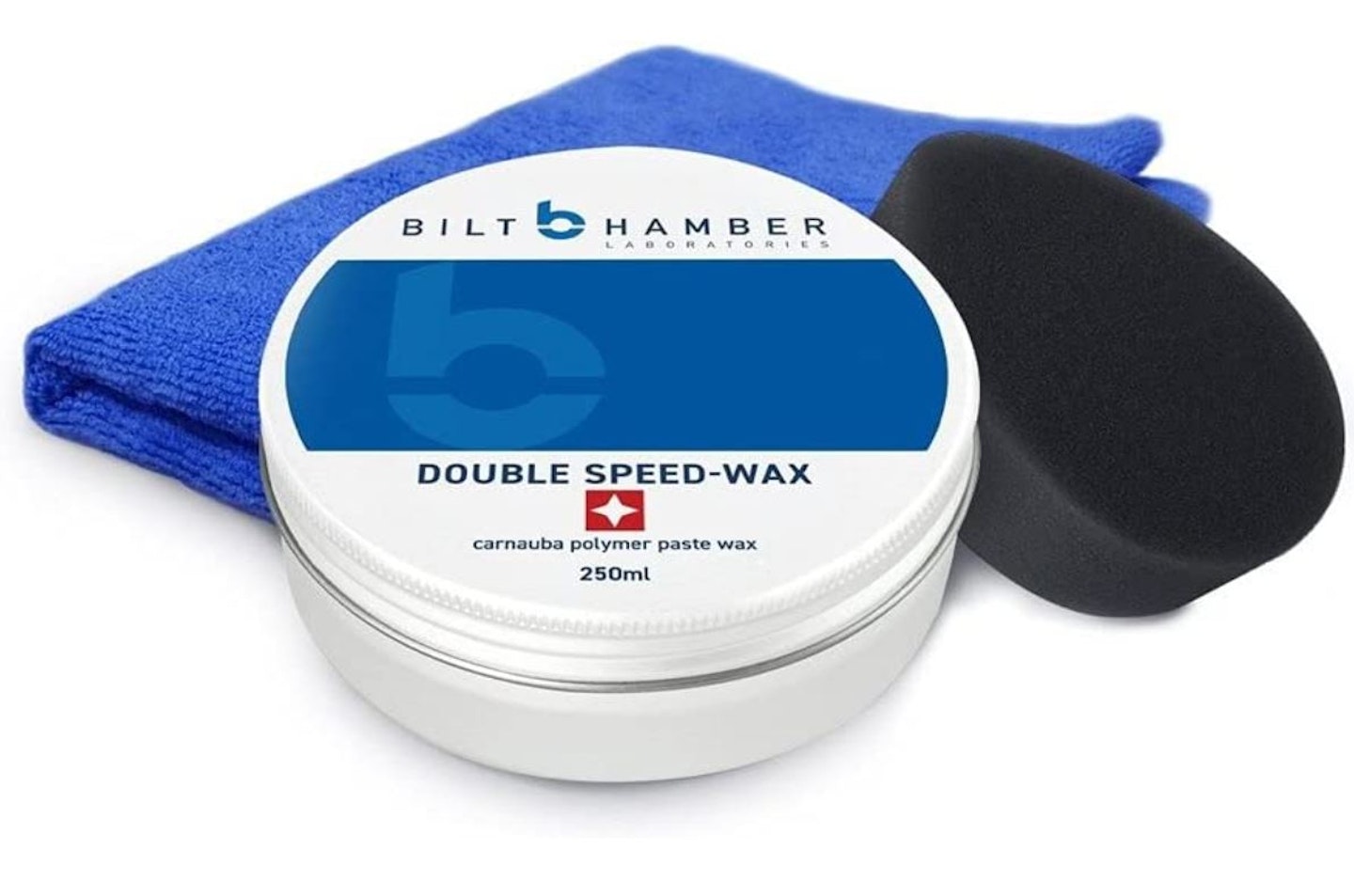
The Bilt Hamber wax is a blend. It is just as durable as some of the more expensive waxes you'll find because it goes on quite thick. It has hydrophobic polymers added into the concoction to help with water beading and to make it harder for dust and grime to adhere to paintwork. For frequently used cars, try and reapply once every four to six months.
Pros
- Easy to use
- Highly water repellent
Cons
- Hard to remove
Best synthetic liquid wax
This synthetic sealant from Chemical Guys is so easy to apply and generates some of the best post-polish shine you'll find. It's just as durable as the Bilt Hamber wax and even faster to apply. You can use this on painted plastics (including on motorcycles), carbon fibre, and fibreglass too. Allow for a 20-minute drying time.
Pros
- Delivers a durable high gloss shield
- Gives a mirror-like wet finish
Cons
- Harmful if inhaled
Best pure wax
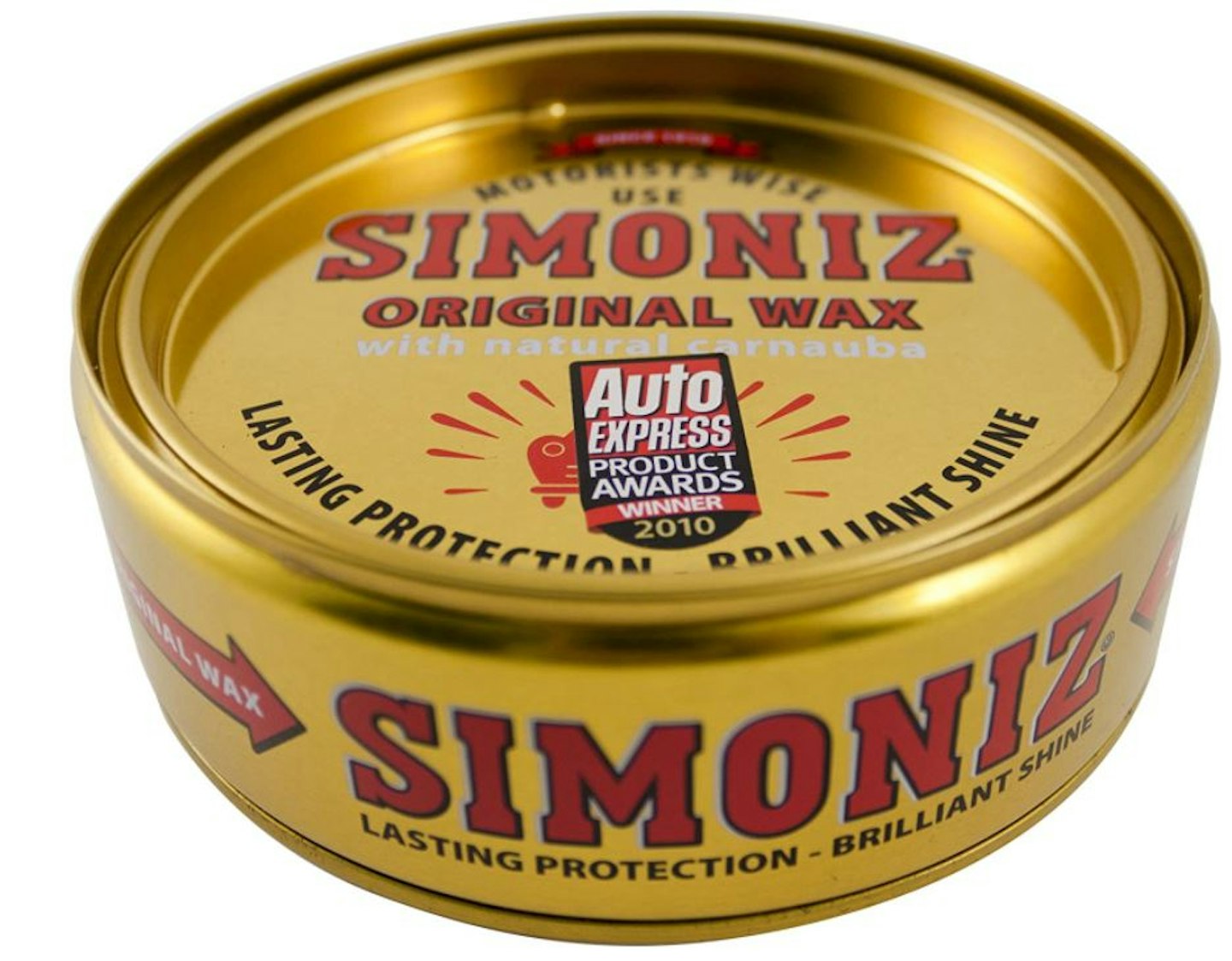
Take the time to apply it properly and you will be rewarded for your efforts. A polished car looks great with this wax and is protected very well. Simoniz says it will last up to 12 months, but if you use your car a lot, we suggest reapplication similar to that of the Bilt Hamber wax, at least a couple of times a year. It's great value too.
Pros
- Brilliant shine
- Made with natural carnauba
Cons
- Quite difficult to apply
Best spray wax
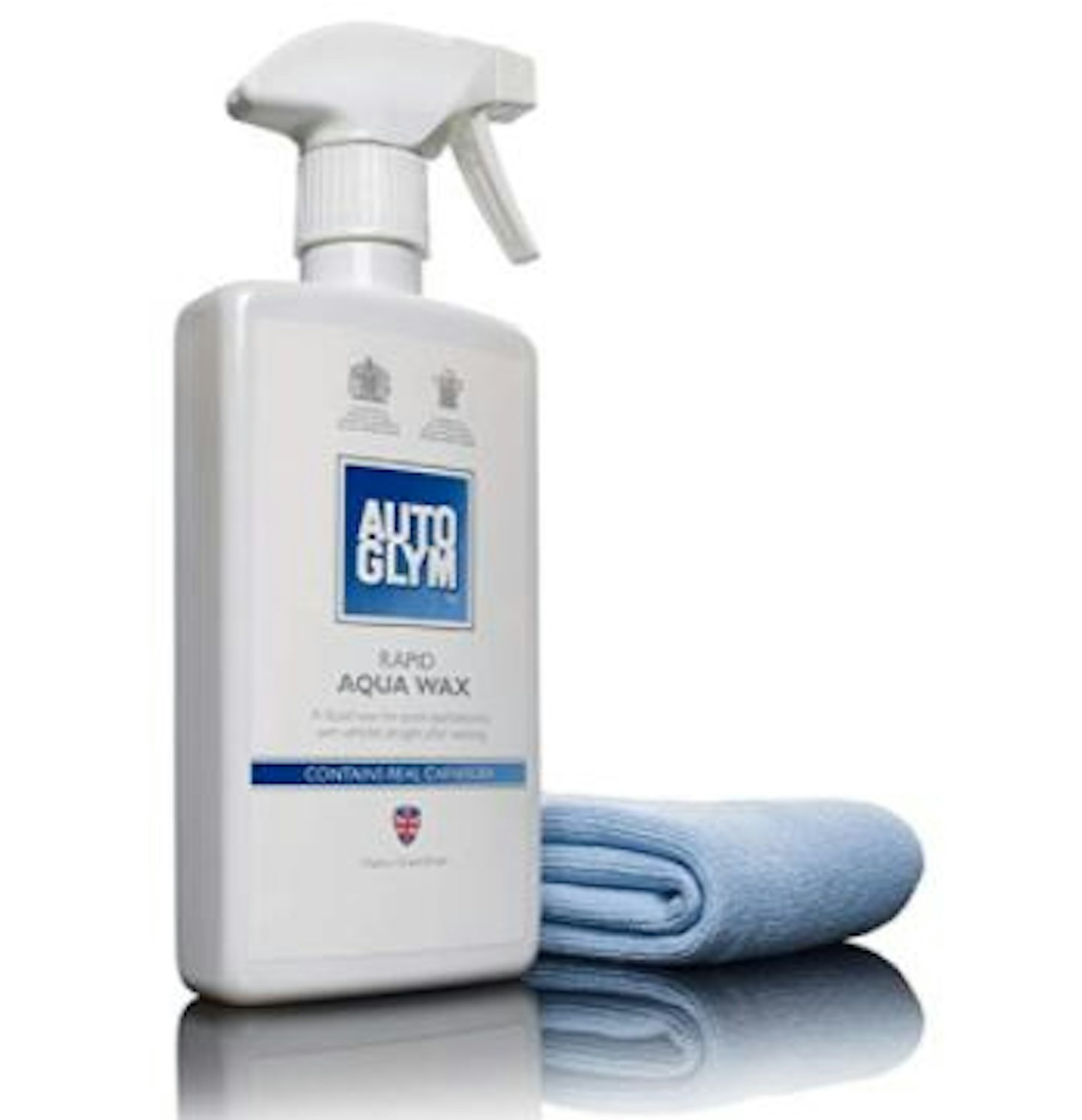
For speed, a spray wax reigns supreme. The trade-off is that it needs doing more frequently. This carnauba-based Rapid Aqua Wax from Autoglym is great for time-saving because it can be applied directly to a clean car that is still wet, but for best results, it needs to be reapplied every month.
Pros
- Can be used to protect all exterior surfaces, including paint, plastic, rubber and glass
- Includes 2 x blue microfibre cloths
Cons
- Not a great shine
Ceramic products
Ceramic products come in liquid form, either as a lacquer or as a spray. As such, they are all easy to apply and are very durable – lasting years in some cases. Many establishments offer professional applications of ceramic coatings. They are very good, but there are options you can apply yourself.
Ceramic coatings are essentially an upgrade to wax, not so much in terms of post-polish shine, but certainly in terms of protection and durability. Even sprays can last for months.
While the bottled ceramic products tend to be for paintwork only, some sprays demonstrate one of the major advantages of ceramics over traditional wax in that they can be used on any exterior surface, including glass, plastic trim, wheels, and headlights.
Sprays are fast to apply but often still require clean, dry surfaces. Some do not, but we suggest you do anyway for best results. Ceramic lacquers are more like the wax pastes. They need to be applied carefully, buffed following application, and some require a curing time. It's not difficult, but you do need to take care, and application can take a while.
Below are our recommended ceramic coating products:
Best ceramic coating

If you want a true ceramic coating, this Gtechniq C1 Crystal Lacquer is our recommendation. It will give you a couple of years' worth of effective protection, which is quite remarkable. And it's not like it's hard to use. You have to wear gloves, which is quite cool; work one body panel at a time, applying the coating before wiping straight away with a microfibre cloth. Once you've done the whole car, you need to leave it to cure for 12 hours indoors. It's a proper weekend job, but it's worth it.
Pros
- Simply wipe on and buff for a slick finish
- UV protection
Cons
- Application pads are not the easiest to use
Best ceramic wax
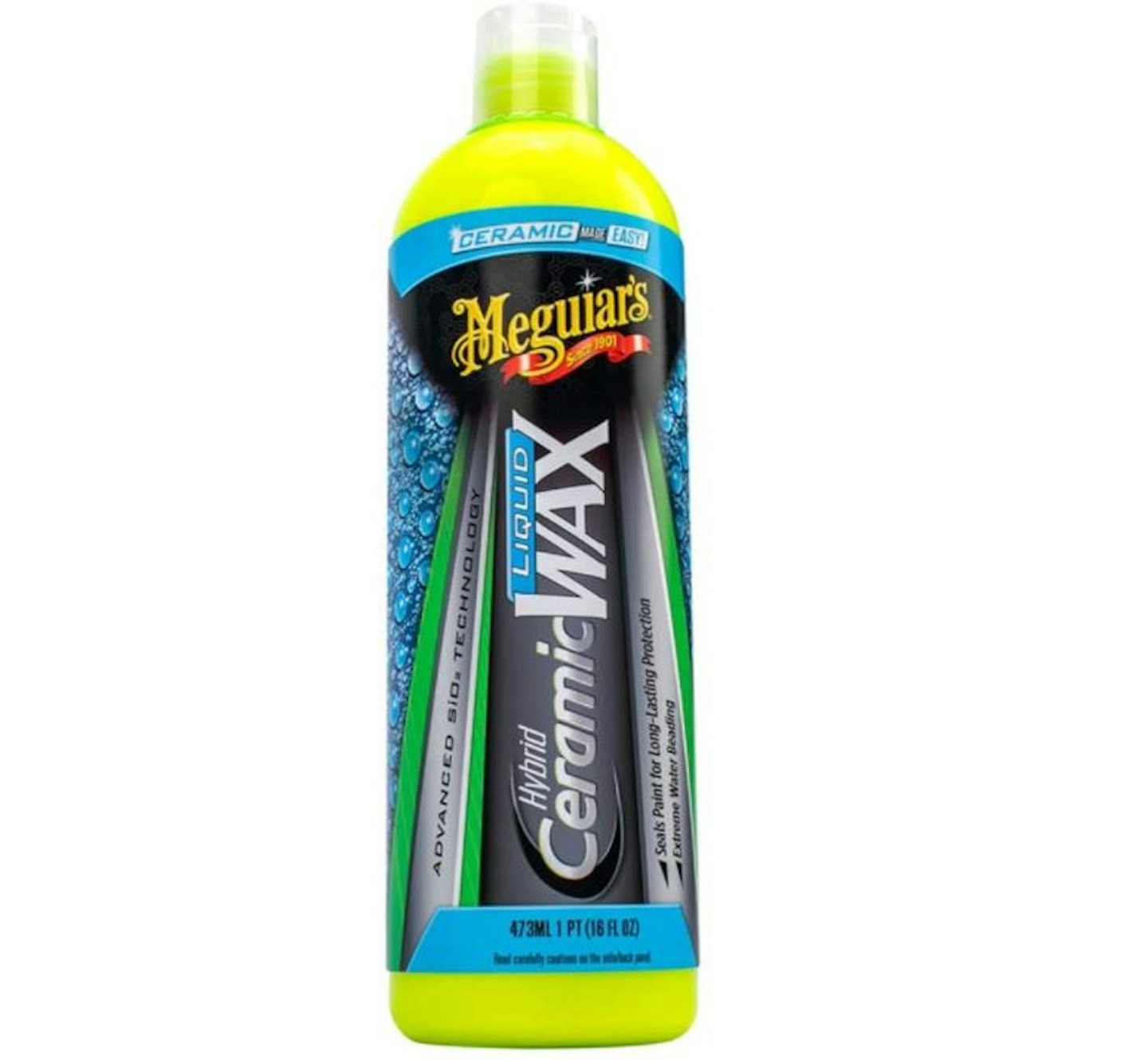
This is the ceramic product most similar to standard liquid wax. It's quite quick to apply, thanks to a three to five-minute curing time. All you need to do is spread it over bodywork and then wipe it off. It lasts for six months.
Pros
- Seals paint for long-lasting protection
- Easy to apply
Cons
- Doesn't last as long as others
Best ceramic spray
This simple panel-by-panel spray and buff option lasts up to nine months while protecting your paintwork and offers good value for money too. The brand you may be unfamiliar with, but we've tested the 26JPN range and found several of its products very effective.
Pros
- Offers excellent beading and sheeting
- Long-lasting finish
Cons
- Can leave streaky if not applied correctly
Best ceramic detailer

This is one of those wonderful sprays that you can use on any non-porous exterior part of your car. It can even be used in direct sunlight if you have to, but the surface does need to be clean and dry first. Turtle Wax says a double coating protects for a year. Like a regular wax, we'd suggest applying at least a couple of times a year if your car is used a lot because this only incorporates SiO2 rather than being a bonafide ceramic protectant.
Pros
- Waterless Cleaning
- Scratch free
Cons
- Hard to remove
Graphene
Graphene really is a later, greater version of ceramics. There's lots of hype over extreme water beading and all the other things enthusiasts get excited about. But the main benefits of graphene products are its durability, ease of application, and reduced heat absorption.
For these reasons, our suggested graphene options are very user-friendly ones. One being a multi-surface spray, the other being a familiar three-piece paint care kit. For what they are, they perform amazingly. And the thing is, if you want an extremely durable paint protection, the ceramic lacquers will do just that. The options below offer very high levels of protection and also offer ease of use, which suits most of us perfectly.
Best protective spray
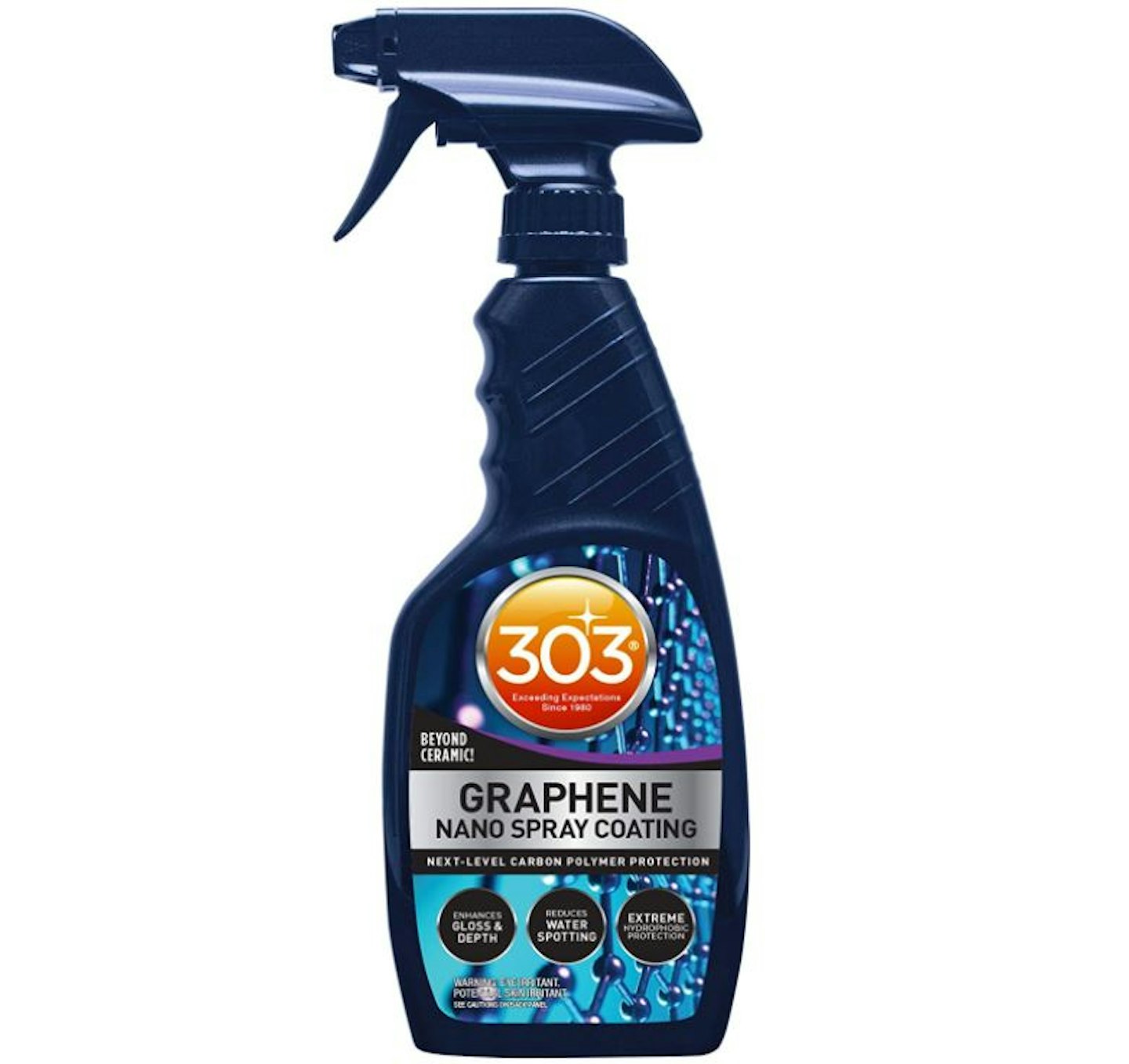
This is the graphene product we'd recommend with the most enthusiasm. Like the ceramic spray, this can get used on any non-porous exterior surface. The application method is the same too. The length of protection is about a year but will perform better over that period of time.
Pros
- Able to use on chrome, wheels, trim, and glass
- Reduces water spotting
Cons
- The nozzle spray is quite flimsy
Best graphene paint care kit
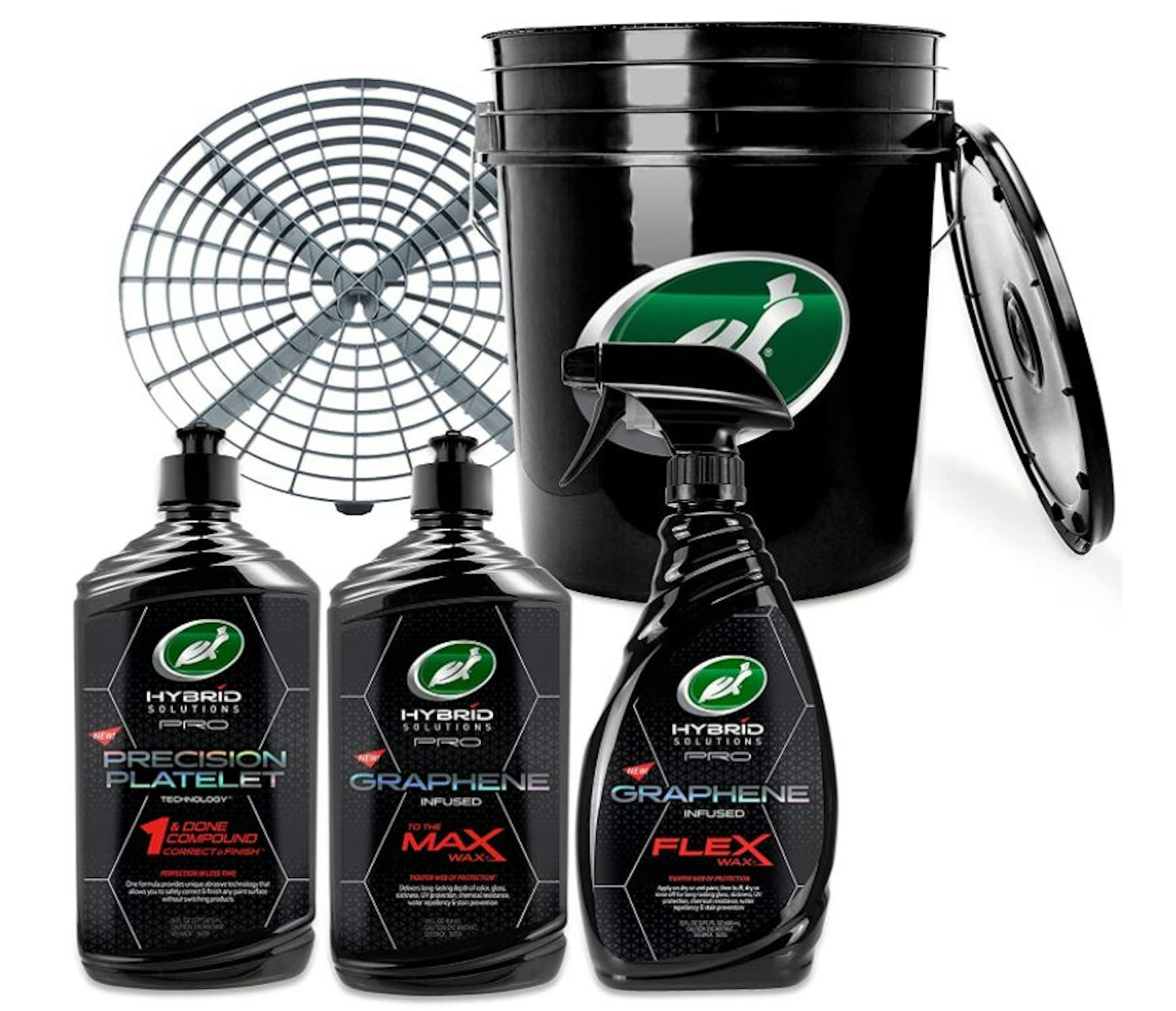
www.turtlewax.co.uk
Turtle Wax's full graphene kit gives you the latest in paint protection. There is a compound for shine, graphene-infused wax for paintwork protection, and Turtle Wax's equivalent of the 303 spray, which is equally versatile and provides similar protection. These are all like standard polishes, waxes, and sprays to apply.
Pros
- Ultra-fine polish
- Three pack
Cons
- Not as long-lasting for the quality
Verdict
The best of the sprays is the 303 Graphene Nano Spay. It's long-lasting for a spray, quick to apply, and versatile.
In terms of the more dedicated options, the Gtechniq ceramic coating offers the best protection, but it takes time to apply, and it's not cheap. Meanwhile, the waxes you'll likely be very familiar with, know how to use, and what to expect - Bilt Hamber's is our favourite of those.
We refrain from telling you which is best overall because that ultimately depends on your wants and needs, but we hope that this guide has clarified things for you and made your decision easier.


